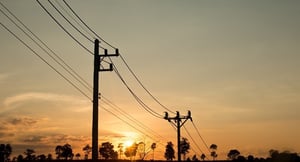What You Need to Know About OTMR
 If you have been following industry news or reading our blogs, you may know by now that the Federal Communications Commission has passed a Report and Order called One Touch Make Ready (OTMR). OTMR is a set of guidelines designed to speed up deployment and prepare the nation for 5G technology.
If you have been following industry news or reading our blogs, you may know by now that the Federal Communications Commission has passed a Report and Order called One Touch Make Ready (OTMR). OTMR is a set of guidelines designed to speed up deployment and prepare the nation for 5G technology.
The possible influence of OTMR is big. “By some estimates, OTMR alone could result in approximately 8.3 million incremental premises passed with fiber and about $12.6 billion in incremental fiber capital expenditures,” the FCC's order states.
Are You Ready for One Touch Make Ready?
- It vetoes moratoria.
- It permits overlashing.
- It requires contractors to perform safe and reliable OTMR work. Utilities are encouraged to create their own lists of approved contractors. If they don’t do so, attachers may use the FCC’s requirements to hire qualified contractors.
- It sets time limits for completing make-ready work.
- It puts a bigger responsibility of make-ready work in the hands of the new attacher.
- It establishes procedures that must be followed if existing equipment is damaged during installation of a new attachment.
To read more about the bare basics of OTMR, read our blog post: Are You Ready for One Touch Make Ready?
FCC Regulation and OTMR
The role of each community member will change under OTMR. Some responsibilities and rights have been shifted from one party to another. Existing attachers have a much smaller role in the process.
It is also important that joint use parties understand that One Touch Make Ready rules apply only to simple attachments in the middle (or “communications space”) of a utility pole. Attachers at the top (or “electric space”) of the pole must follow a multi-touch process.
Shortening the deployment time for new broadband and small cell attachments is the main purpose of OTMR, but it’s also one of the biggest challenges. Here’s a before-and-after comparison of some steps in the process:
After: OTMR makes clear what must be included in the application. It gives asset owners 10 days to determine whether the application is complete.
The FCC states that, while OTMR gives new attachers more control over the speed of deployment, it also relieves asset owners of some of the responsibilities and costs they had to bear under the old rules.
To read about the specifics of new policies and joint use roles under the OTMR guidelines, check out our blog: Challenges with FCC Internet Regulation and One Touch Make Ready
Getting Started: Contractor Selection
If a list is provided, the attacher must select a contractor from that list. If the asset owner does not offer a list of approved contractors, the attacher may select a contractor using the FCC’s minimum requirements.
Getting Started: Attachment Installation
To read more about the contractor selection process and attachment installation, visit our blog post: Getting Started with OTMR: Make Ready Work
Utilizing OTMR to its Full Potential
Here are a few promises made by the order that support fast, safe, and reliable deployment:
To understand the promises that OTMR offers to joint use professionals, read our blog: The Promises of One Touch Make Ready (OTMR)
Preparing for One Touch Make Ready
For asset owners, the first step is to cultivate a list of qualifications for contractors, based on the OTMR guidelines. The next step is building a list of approved engineering and construction contractors who are qualified to work on their utility systems.
For attachers, the first step is get familiar with the authorized-contractor list of requirements and to reach out to local asset owners for their lists.
The next step all parties is to update points of contact. Since notices must be sent to all parties during steps of OTMR, having updated contact lists will make the process run smoothly.
Read more about how to prepare your staff for the new OTMR policy: Preparing Your Staff: One Touch Make Ready and Broadband Deployment
Maximizing Resources
Fortunately, there are alternative solutions and processes. Companies can make a streamlined transition to OTMR with their joint use personnel. The key is getting started the right way.
Alden has created an automated workflow for our joint use platform, Alden One®. Our platform ensures compliance, and helps companies coordinate with other parties. Here are six features of our OTMR workflow that guarantee compliance:
- Alden One® guarantees FCC timelines will be met through automated timers.
- Communication tools provide users the ability to work in one system with all OTMR parties, ensuring coordination.
- The system stores a list of authorized contractors, pole attachment agreements, contracts, points of contact, and pole locations.
- The OTMR workflow enables users to send out the required notices for each step.
- All activities are logged to demonstrate compliance, when needed.
- Dashboards show a high-level view of all activities so that businesses can make data-driven decisions.
Alden consultants are available to help companies get OTMR compliant. Our goal is to help owners and attachers save their energy and time during this complex new process.
If you are struggling with where to begin or how to put compliant processes in place, reach out to one of our product specialists to discuss how a joint use platform can help your company transition to OTMR. We are here to walk with you through every step.
